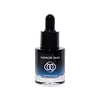What's inside
What's inside
 Key Ingredients
Key Ingredients

 Benefits
Benefits

 Concerns
Concerns

No concerns
 Ingredients Side-by-side
Ingredients Side-by-side

Water
Skin ConditioningHamamelis Virginiana Water
AstringentGlycerin
HumectantAlcohol
AntimicrobialHydrolyzed Rice Protein
Skin ConditioningHydroxypropyl Cyclodextrin
MaskingPolysorbate 20
EmulsifyingCopper Tripeptide-1
Skin ConditioningThioctic Acid
AntioxidantAcetyl Carnitine Hcl
Skin ConditioningPhenyl T-Butylnitrone
AntioxidantSh-Oligopeptide-1
Skin ConditioningCassia Alata Leaf Extract
AstringentMalus Domestica Fruit Cell Culture Extract
Skin ConditioningCitrus Grandis Peel Oil
MaskingButyrospermum Parkii Butter
Skin ConditioningSea Salt
AbrasiveLonicera Caprifolium Flower Extract
PerfumingLonicera Japonica Flower Extract
Skin ConditioningCitrus Aurantium Dulcis Peel Oil
MaskingGluconolactone
Skin ConditioningZea Mays Starch
AbsorbentHydrolyzed Corn Starch
HumectantHydrolyzed Corn Starch Octenylsuccinate
AbsorbentRubus Fruticosus Fruit Extract
AstringentPolysorbate 80
EmulsifyingSodium Benzoate
MaskingPhenethyl Alcohol
MaskingCaprylyl Glycol
EmollientPhenoxyethanol
PreservativeWater, Hamamelis Virginiana Water, Glycerin, Alcohol, Hydrolyzed Rice Protein, Hydroxypropyl Cyclodextrin, Polysorbate 20, Copper Tripeptide-1, Thioctic Acid, Acetyl Carnitine Hcl, Phenyl T-Butylnitrone, Sh-Oligopeptide-1, Cassia Alata Leaf Extract, Malus Domestica Fruit Cell Culture Extract, Citrus Grandis Peel Oil, Butyrospermum Parkii Butter, Sea Salt, Lonicera Caprifolium Flower Extract, Lonicera Japonica Flower Extract, Citrus Aurantium Dulcis Peel Oil, Gluconolactone, Zea Mays Starch, Hydrolyzed Corn Starch, Hydrolyzed Corn Starch Octenylsuccinate, Rubus Fruticosus Fruit Extract, Polysorbate 80, Sodium Benzoate, Phenethyl Alcohol, Caprylyl Glycol, Phenoxyethanol
Ingredients Explained
These ingredients are found in both products.
Ingredients higher up in an ingredient list are typically present in a larger amount.
Copper Tripeptide-1 (GHK-Cu) is a skin repairing ingredient known for its ability to boost collagen, improve firmness, and support skin regeneration.
It is a complex made up of a naturally occurring peptide (glycine-histidine-lysine) and copper, an essential trace element.
While studying wound healing, researchers noticed GHK-Cu stimulated hair follicle enlargement and growth by keeping hair in its active growth phase longer. This has made it a promising ingredient for hair regrowth treatments.
Some people have reported increased facial hair. While GHK-Cu can make your hair follicles bigger, it usually doesn’t turn soft, barely-visible facial hairs into thick, dark ones.
Anecdotal reports suggest that overusing copper peptides might lead to premature aging due to excess free copper or enzyme imbalances. This claim isn’t backed by large-scale studies.
Unfortunately, there are limited human studies for this ingredient. While early results are promising, many studies are either small, in-vitro, or not rigorously controlled.
For example, there is a 1998 study that explored the effects of copper tripeptide, vitamin C, tretinoin, and melatonin on skin repair and collagen synthesis.
After one month, increased procollagen production was seen in 7 out of 10 participants using copper tripeptide (more than those using vitamin C, melatonin, or tretinoin.
While the study was exploratory, it offers early evidence that copper tripeptide may support collagen production. Larger, well-designed trials are still needed to confirm its potential and understand individual responses.
Read more about other common types of peptides here:
Learn more about Copper Tripeptide-1Glycerin is already naturally found in your skin. It helps moisturize and protect your skin.
A study from 2016 found glycerin to be more effective as a humectant than AHAs and hyaluronic acid.
As a humectant, it helps the skin stay hydrated by pulling moisture to your skin. The low molecular weight of glycerin allows it to pull moisture into the deeper layers of your skin.
Hydrated skin improves your skin barrier; Your skin barrier helps protect against irritants and bacteria.
Glycerin has also been found to have antimicrobial and antiviral properties. Due to these properties, glycerin is often used in wound and burn treatments.
In cosmetics, glycerin is usually derived from plants such as soybean or palm. However, it can also be sourced from animals, such as tallow or animal fat.
This ingredient is organic, colorless, odorless, and non-toxic.
Glycerin is the name for this ingredient in American English. British English uses Glycerol/Glycerine.
Learn more about GlycerinPhenoxyethanol is a preservative that has germicide, antimicrobial, and aromatic properties. Studies show that phenoxyethanol can prevent microbial growth. By itself, it has a scent that is similar to that of a rose.
It's often used in formulations along with Caprylyl Glycol to preserve the shelf life of products.